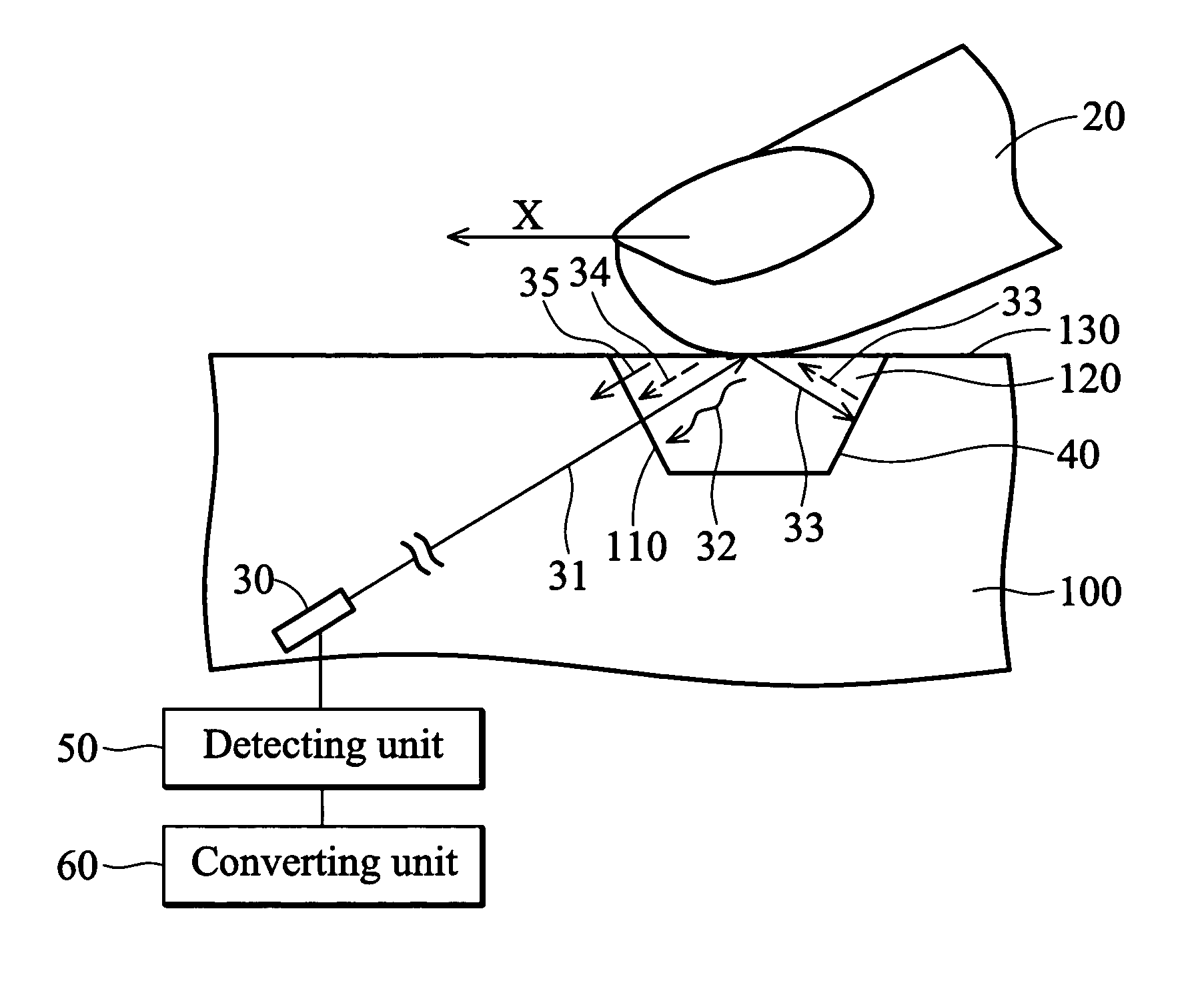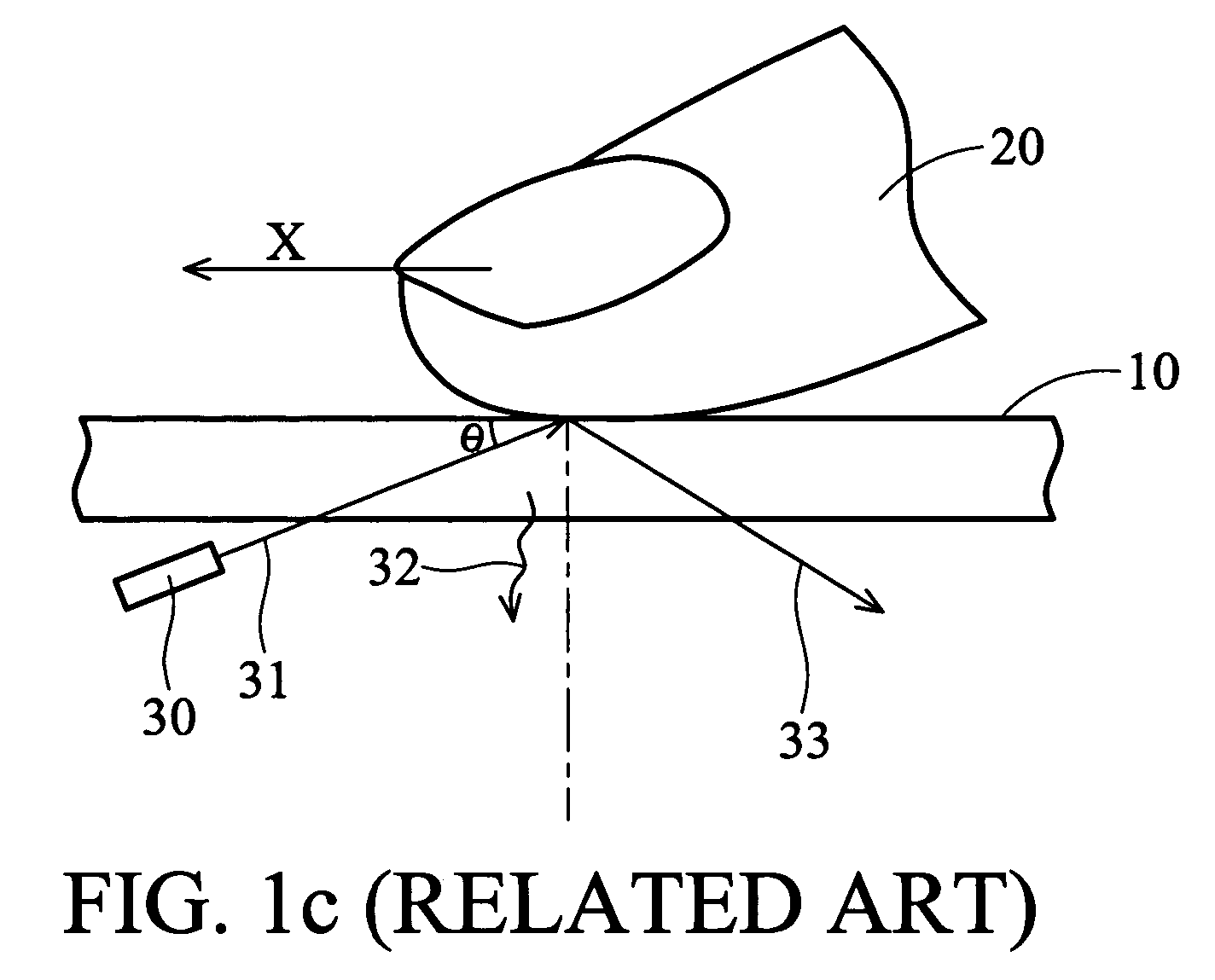Optical detecting module and optical detector thereof
a technology of optical detection module and optical detector, which is applied in the field of optical detection module, can solve the problems of self-mixing in the resonance chamber failing, and achieve the effects of improving the sensibility of the optical detector, increasing the optical-electrical variation, and reducing the conversion cost of optical-electrical variation and electric signal
- Summary
- Abstract
- Description
- Claims
- Application Information
AI Technical Summary
Benefits of technology
Problems solved by technology
Method used
Image
Examples
first embodiment
[0025]FIG. 2a shows the invention, which comprises a light source (laser diode) 30, a light guide 100, a detecting unit 50 and a converting unit 60. The light source 30 comprises a resonance chamber (not shown). The light guide 100 comprises a recess 120 comprising a first light emitting surface 110 and reflective portion 40. The first light emitting surface 110 and the reflective portion 40 are located on sidewalls of the recess 120. The detecting unit 50 is coupled to the light source 30. The converting unit 60 is coupled to the detecting unit 50.
[0026]The light source 30 emits a laser beam 31 toward an object 20. The laser beam 31 travels out of the light guide 100 from the first light emitting surface 110, contacts the object 20, and generates a first scattering beam 32 and a reflection beam 33. A part of the first scattering beam 32 travels into the resonance chamber. The reflection beam 33 is reflected by the reflective portion 40 to the object 20. The reflection beam 33 conta...
second embodiment
[0031]FIG. 3 shows the invention, wherein the laser beam 31, the first scattering beam 32, the reflection beam 33, the sub-reflection beam 35 and the second scattering beam 34 travel in the light guide 100. The laser beam 31 and the reflection beam 33 are emitted out of the light guide 100 through a second light emitting surface 112 (measurement surface 130) to contact the object 20. The recess 120 alters the light transmitting medium to reflect the reflective light 33. The reflective portion 40 is a simple planar surface located on a sidewall of the recess 120 or a planar surface coated with light reflective material.
third embodiment
[0032]FIG. 4a shows the invention, wherein the light guide 100 is a polyhedron. The reflective portion 40 is located on a surface of the light guide 100. The laser beam 31, the first scattering beam 32, the reflection beam 33, the sub-reflection beam 35 and the second scattering beam 34 travel in the light guide 100. The laser beam 31 and the reflection beam 33 are emitted out of the light guide 100 through a second light emitting surface 112 (measurement surface 130) to contact the object 20. The reflective portion 40 is a planar surface located on a sidewall of the recess 120 or a planar surface coated with light reflective material.
[0033]FIG. 4b shows a modified form of the third embodiment, wherein the reflective portion 40 is a curved surface. The reflective portion 40 can also be in other shapes to reflect light.
PUM
 Login to View More
Login to View More Abstract
Description
Claims
Application Information
 Login to View More
Login to View More - R&D
- Intellectual Property
- Life Sciences
- Materials
- Tech Scout
- Unparalleled Data Quality
- Higher Quality Content
- 60% Fewer Hallucinations
Browse by: Latest US Patents, China's latest patents, Technical Efficacy Thesaurus, Application Domain, Technology Topic, Popular Technical Reports.
© 2025 PatSnap. All rights reserved.Legal|Privacy policy|Modern Slavery Act Transparency Statement|Sitemap|About US| Contact US: help@patsnap.com



